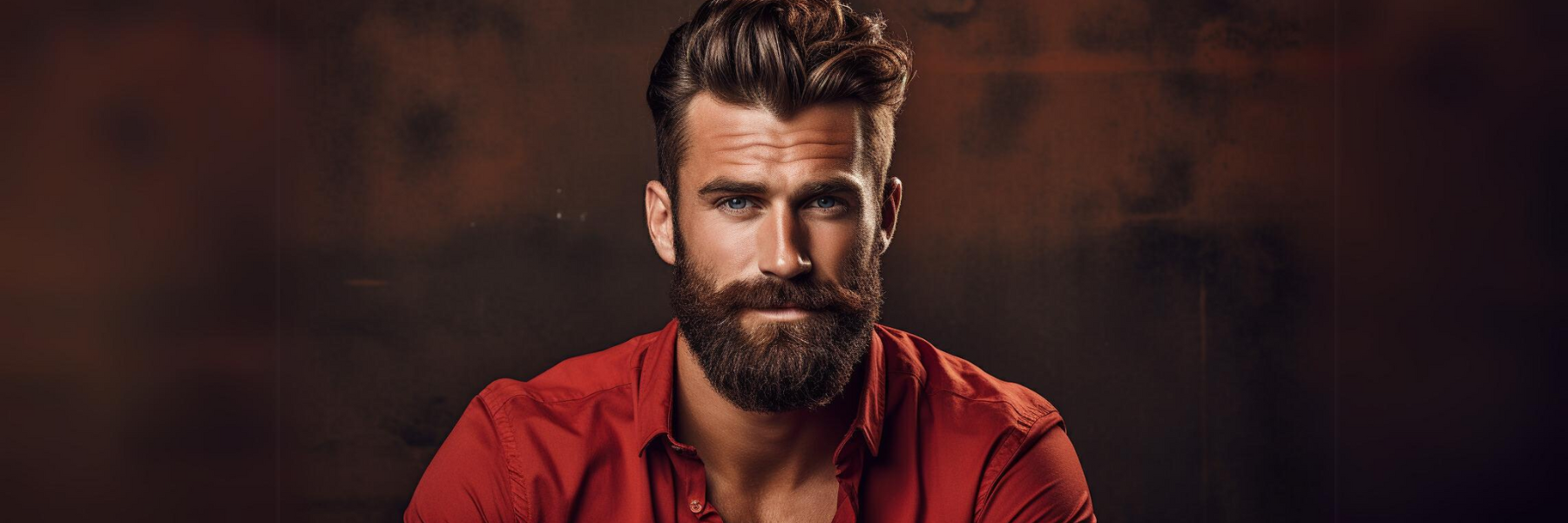Picture this: you're grooming your hair one fine morning and you notice a strand, or perhaps a cluster, of red hairs in your beard.
It's a puzzling moment. "Why is there ginger in my beard?" you might ask, especially if the hair on your head doesn't share the same hue.
This intriguing phenomenon is more common than you might think, and it's rooted deep in the science of genetics and hair pigmentation.
In this comprehensive guide, we'll explore the mysteries behind your beard's unique color palette, dive into the science of hair pigmentation, discuss the reasons behind the differing colors of beard and head hair, and provide you with top-notch tips to care for your beard (red beard or not).
The Science Behind Beard Pigmentation
Your beard hair color is determined by two types of melanin: eumelanin (responsible for black and brown shades) and pheomelanin (responsible for red and yellow shades).
The specific type and amount of melanin present in your hair follicles dictate the color of your hair. This process is orchestrated by your genes, with the MC1R gene playing a particularly pivotal role in determining whether eumelanin or pheomelanin dominates.
The Role of Genetics in Your Beard's Hue
Genetics is like nature's lottery, and it's the ultimate determinant of your hair color.
Each person carries two copies of every gene, one from each parent. The MC1R gene is known for its influence on red hair and is often referred to as the red hair gene. Or in this case, the red beard gene.
If you inherit two mutated versions of the MC1R gene, you're likely to have red hair and a ginger beard. However, carrying just one copy of this mutated gene can result in unexpected ginger strands in your beard, even if your head hair is dark hair or blond hair
Why Beard Hair May Differ from Head Hair
Your beard and head hair are not as closely related as you might think. The hair follicles in different parts of your body respond differently to hormonal changes, which can lead to varying colors and textures.
Androgens, a group of hormones that includes testosterone, play a significant role in beard growth and can affect the pigment production in beard hair follicles differently than scalp hair.
Why Is My Beard Turning Red?
So why do guys get red in their beard? Finding red hairs in your beard can be surprising, especially if you don't identify as a redhead.
This phenomenon is primarily due to the incomplete dominance of the MC1R gene.
Even if one of your MC1R genes is mutated, it can be enough to cause a noticeable amount of red in your beard. This genetic trait is a fascinating display of your unique genetic makeup and the complex inheritance patterns that contribute to our diverse appearances.
The Red Hair Gene
The MC1R gene is one of the key players in the world of hair color. It's responsible for producing a protein that controls the type of melanin produced in your hair follicles. The mutation in the MC1R gene can lead to a higher proportion of pheomelanin, giving rise to red pigments.
Interestingly, this gene's expression can vary, leading to a full head of red hair, a ginger beard, or even sporadic ginger strands in your beard.
Other Reasons for Variance in Beard Color
While genetics is the primary factor in determining your beard color, other elements can contribute to color variance. Age, hormonal changes, environmental factors, and even stress can influence the pigmentation of your beard over time. It's not uncommon for men to notice their beard hair changing color or becoming more variegated as they age.
How to Care for Your Unique Beard
No matter the color of your beard, proper care is essential for maintaining its health and appearance. At stubble + 'stache, we understand that each beard is unique and deserves the best. Here are some top tips for keeping your ginger-tinted or multicolored beard in top condition:
1. Keep It Clean: Regular washing helps remove dirt, oil, and dead skin cells. Use a gentle beard wash like the Cleanse: Face and Beard Wash, which cleans without stripping away natural oils while supporting healthy barrier function.
2. Hydrate and Condition: A daily facial moisturizer like Hydrate: Daily Face + Beard Moisturizer helps keep both your skin and beard moisturized while reducing beard itch, flakes and premature aging.
3. Soften and Protect: A great beard oil, such as Soften: Face + Beard Oil, will not only soften your ginger beard it will also add subtle shine. Soft, well cared for facial hair is less prone to breakage and more comfortable to the touch.
4. Style with Care: For styling, use a gentle product that provides hold without stiffness. Groom: Probiotic Beard Balm is perfect for keeping those stray hairs in check while also nourishing your beard.
5. Regular Trims: Even if you're growing it out, regular trims are crucial for a healthy-looking beard. Trimming gets rid of split ends while maintain your desired shape.
The presence of ginger in your beard, whether in abundance or as sporadic strands, is a testament to the complex and fascinating world of genetics and your family history.
It's a characteristic to be embraced, a sign of the rich genetic tapestry that makes you you. With the right care and the proper beard products, your beard, regardless of its color, can be a statement of style and personality.

